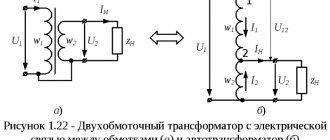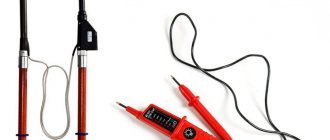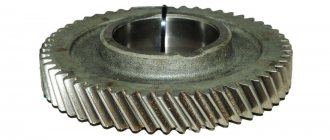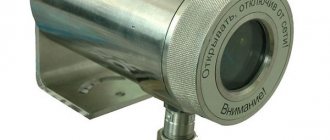Everyone who has done plumbing work at least once has encountered the problem of rusted fasteners. This happens especially often when repairing used equipment. Attempts to unscrew a tightly rusted screw with an electric screwdriver or unscrew the nut by hand are often unsuccessful. This often damages both the fastener itself and the tool. For such difficult cases, an impact or impact screwdriver is intended.
Operating principle of an impact screwdriver
The simplest version of such a screwdriver is made in the form of a special tool with a monolithic core, which begins with a tip and ends with a massive heel in the handle area. This product was in demand back in the days of the Soviet Union.
Modern models are equipped with a hexagon near the tip or on the handle, so they are able to transmit rotational force from the key. To successfully complete the task, it is advisable to use a screwdriver together, since one worker will be able to hold the tip in the screw slot and create torque with a wrench, while the other will strike the back of the handle with a hammer.
True, such a solution has some disadvantages . Among them:
- The need for two partners to work together.
- Lack of conversion of received energy into torque. Hammer blows only unscrew a self-tapping screw or screw, since they are capable of destroying rust and creating a certain vibration. The version of the impact-rotary screwdriver is more advanced, so it can transform the impact force into a rotational movement of the tip, which is very convenient.
In most cases, the term “impact screwdriver” means precisely a modernized solution, since the classic simplest version has long gone out of common use and has ceased to enjoy its former popularity.
In the improved version, the impact-rotating unit is located in the handle, and the sting is fixed on the gear and has characteristic oblique teeth. A clip with counter teeth is used as a handle. Under the influence of hammer blows on the heel of the handle, the clip begins to move along the axis, imparting a rotational movement to the tip through a gear drive.
In this way, a rotation of several degrees occurs, which is quite enough to loosen the protective connection and successfully unscrew the fastener using a conventional tool. As a result, the clip returns to its previous position by means of a spring.
Operating such a screwdriver is not difficult at all. The rotary mechanism is capable of providing a combined translational and rotational force on the screw slot, which is very effective for successfully unscrewing stubborn threaded connections.
Features and principle of operation
The impact screwdriver was popular back in the days of the Soviet Union. At that time, it was made in the simplest form with the presence of a monolithic core. After some time, this device underwent a slight modification, and screwdrivers of this type began to be equipped with a hexagon near the tip, and in some models it was installed on the handle. That is why power screwdrivers have the ability to transmit rotational force from the key. To carry out successful work with the described device, it was necessary to use a double workforce. In simple terms, one master supported the sting and at the same moment created rotation using pliers, and the second made superficial blows with a heavy object.
In the modern world, a name such as an impact screwdriver implies a modified device that can unscrew any bolts. Classic models from the past have lost public interest and are no longer in demand. In current modifications, the impact-rotating unit is located in the handle, the sting is mounted on the gear. The movement of the device begins under the influence of a heavy object. The clip moves along the specified axis, due to which the fasteners shift by a couple of degrees. This distance is enough for the connection to loosen, after which the bolts are unscrewed. The return of the impact unit to its original position occurs due to a special spring located in the structure. Only one manpower is needed to operate this model of power screwdriver.
You should familiarize yourself with the technical specifications of impact screwdrivers. There is no point in talking about the quality of the device and the reliability of the metal used in production. Popular brands will never use low-quality materials to make their products.
An important factor in the design of an impact screwdriver is the presence of reverse. It is he who expands the capabilities of the impact device
It is important to pay attention to the design of the handle. The presence of rubber or polyethylene layers in the body will allow you to hold the unit in your hand. In addition, this is a special safety condition
In addition, this is a special safety condition.
Manufacturers use several factors when developing each impact driver model.
- The dimensions of the case do not change, but its use in difficult and crumpled conditions is strictly prohibited.
- Allows you to increase the area of use and increase the level of convenience during operation. But then the reliability of the tool itself may suffer.
When making a choice between one unit or another, you need to understand the features of the upcoming work, with all possible difficulties and nuances, and only after that purchase a power screwdriver. It is worth noting that purchasing one screwdriver is extremely illogical. In this case, tool manufacturers found solutions and began to produce sets with several nozzles of different sizes and tips on the world market.
Specifications
If you are going to purchase a screwdriver in a store, be prepared to understand the key technical characteristics and equipment of a particular model.
When reviewing these characteristics, it is not necessary to talk about the build quality and reliability of the material from which the tool is made. Trusted companies never use low-quality steel to produce such products.
You should pay attention to the presence of a reverse, which significantly expands the basic capabilities of the device, allowing you not only to unscrew rusty connections, but also to firmly tighten the screw in the place where it is needed.
The next important factor is represented by the design of the handle, which is intended to hold the device and the body. If there is a polyurethane, rubber or polyethylene lining on the body, it is much more convenient to hold the screwdriver. If the pad has a “bulge” in the heel part, this has a positive effect on operational safety. In most cases, screwdriver manufacturers follow two paths:
- The dimensions of the case do not change, while the screwdriver remains highly reliable, but cannot be used in extreme and cramped conditions.
- To expand the scope of application and improve ease of use, the dimensions of the metal case are reduced, although the reliability of the tool suffers because of this. When choosing the ideal solution, you should carefully weigh all the features and only then make a purchase.
It is no secret that popular brands produce screwdrivers along with an additional set of attachments, because without these elements the tool is simply ineffective. The screwdriver comes with a holder for standard bits, and the kit also includes several universal bits.
The market for such products is overflowing with attachments for various splines and hexagons. When purchasing these parts, be careful and consider the build quality. This is a very important parameter that determines the reliability of operation and service life of the screwdriver.
Some tips for choosing
When choosing a tool, it is important to pay attention to the design of the screwdriver. The quality of the rod can be checked by the presence of factory markings. The tip tends to be darker than the shaft, indicating the presence of chrome vanadium or molybdenum alloys. A long rod will help you deal with fasteners that are impossible to get to. The tip can be made of a magnetized alloy, which helps to hold the loosened bolt or screw without using your hand. When it comes to the handle, ergonomics are very important when working with any plumbing tool, as it affects efficiency and comfort.
Advantages and disadvantages of the tool
Like any tool, such a screwdriver has its advantages and disadvantages . Working with it, experts note a number of key advantages:
- Effective distribution of impact energy.
- Much less need for physical effort. The classic version requires stronger and more intense blows.
- Possibility of operation without the help of a partner.
As for the disadvantages, they are practically absent, however, if the basic rules are not followed during operation, such disadvantages often appear:
- Possibility of damage to the impact-rotating unit. The version of the simplest impact screwdriver is made of a monolithic structure, so its service life exceeds the modernized solution. To prevent unexpected damage, it is enough to avoid too strong impacts on the impact-rotating mechanism.
- Tendency to wear out quickly. Gear teeth and races are very exposed to friction associated with shock loads. With prolonged use, their service life deteriorates significantly.
How to use an impact screwdriver
To make the unscrewing process as simple and high-quality as possible, it is enough to avoid irreparable mistakes and follow a number of separate rules:
- The fastener is pre-prepared for unscrewing, so it is cleaned of visible rust and wiped with a rag. The joint is then coated with a special chemical, such as WD-40, a highly effective cleaner. Brake fluid and kerosene perform well.
- Next, you need to fix the tip in the slot, maintaining strictly perpendicular placement relative to the screw head.
- Then you should hit the end of the handle with a hammer with approximately medium force.
- The blows are repeated until the screw head begins to move relative to the axis. Try to check the propeller's progress after each blow.
- Unscrewing is completed using a regular screwdriver.
If the tool is equipped with reverse , many experts recommend setting the tightening mode after each movement of the head, repeating the blows several times, and then unscrewing the hardware again. This is explained by the fact that with this approach, rust elements are removed from the threads particularly well.
To avoid trouble, it is recommended to follow safety precautions:
- It is important to first put on good work gloves or gloves on your hands, which will prevent the handle from accidentally sliding during processing.
- Don't put too much effort into your punches. You can get by with a regular hammer weighing up to 500 grams.
- The strikes should remain light. Do not tilt the hammer, as the hammer can easily slide off the screwdriver, which will cause additional problems.
Differences between a screwdriver and an impact driver
Many people mistakenly think that an impact driver is a good alternative for a screwdriver, but this is deeply misleading. Both devices differ significantly from each other not only in design properties, but also in their operating principle. The screwdriver transmits impact force in a plane perpendicular to the axis of rotation. By the way, this distinguishes it from an impact drill, which is capable of creating shock loads along the axis of rotation. True, a screwdriver only facilitates the process of unscrewing and tightening an already rotating screw.
The functionality of such devices is completely different:
- Impact screwdrivers perform the initial “breaking” of a screw that has become too “stuck” to the connection.
- An impact-type screwdriver reduces the required pressure on the tool when performing the task.
After studying all the features of the tool, be sure to watch the corresponding training videos that will allow you to decide on a specific model from a specific manufacturer. In this case, you will be able to make the right decision and purchase a truly useful and reliable tool that will serve you for a very long time.
Operational differences between a screwdriver and an impact driver
Some users who do not often deal with plumbing repair work believe that a hammer-type screwdriver can be a worthy alternative to an impact screwdriver. This assumption is incorrect, since these devices differ initially in their design, purpose and technical features. An impact screwdriver and a screwdriver have a common feature: both mechanisms are designed for unscrewing hardware, their impact force is perpendicular to the line of rotation.
A distinctive characteristic is the nature of the torsional force:
- The use of a screwdriver predetermines the possibility of initial failure of hardware that has rusted or is firmly “grown” into the working surface.
- An impact screwdriver is designed for unscrewing already rotating hardware: it is used to reduce the physical effort of a person to remove a spinning screw.
Impact screwdriver
In terms of functionality, a screwdriver is an effective, modern tool for high-quality and simple removal of hardware after it has been torn off using an impact screwdriver. Products should not be positioned as interchangeable; their practical application has a distinctive position.
Instructions for use
To successfully unscrew a rusted fastener, it is enough to treat it with a rag or a special product in time. Then the screwdriver is installed on the head of the hardware, preferably perpendicular to it. At the next stage, several blows are made with a hammer on the end of the screwdriver. The success of the upcoming event directly depends on the strength of the tool in the worker’s hand. To eliminate the possibility of your palm sliding along the handle, it is enough to wear a glove, which will significantly reduce the risk of serious hand injuries.
If the fastener changes its direction angle relative to the axis, it is enough to make a few more intense blows, and then change the operating mode to tightening. In this case, you will effectively get rid of rust and significantly simplify the remaining work of unscrewing. If the fastener moves out of place, it can be removed using a regular screwdriver.
It is possible that after performing the above actions, the hardware will not change its direction and will remain in the same position. To solve the problem, simply treat the connecting fasteners with high-quality brake fluid, waiting about 30 minutes. Under the influence of such a “bath”, the upcoming dismantling will be as successful as possible, even if the fasteners are very rusty.
If this does not solve the issue, you will have to break out the fasteners. In this case, it is advisable to use a strong hammer and carefully follow the dismantling instructions.
To carry out dismantling work, you should use the following tools:
- Impact screwdriver.
- With a hammer.
- With a rag.
- Brake fluid.
Making your own impact screwdriver
Many people try to make such a tool with their own hands, claiming that the upcoming action does not require special effort or skill. It is enough to take into account all the details of the instructions and avoid mistakes at the assembly stage.
When making a homemade screwdriver, you need to take the rotor from the electric motor and cut everything off it, leaving only the bushings and shaft. A piece of steel pipe should be placed on the sleeve to be used as a handle. At the opposite end, a nut is inserted into the scrap, which will prevent damage to the handle. At the next stage, all parts are connected to each other by welding.
Basically, making a high-performance impact driver at home is not as difficult as it may initially seem. If you doubt that you can carry out such an assembly yourself, simply study the existing instructions and watch video tips.
Is it possible to make the instrument yourself?
The pricing policy for impact screwdrivers can hardly be considered democratic, since the cost of a good, high-quality and reliable device can exceed three thousand rubles, which not every person can afford financially. You can also find inexpensive mechanisms on sale, at a price of about four hundred rubles per unit of goods, however, it is difficult to guarantee a long service life and reliability of the device in such a situation to the consumer.
Making your own impact screwdriver will allow you to avoid significant investments in purchasing an expensive and reliable tool. Domestic craftsmen claim that it is possible to manufacture the device at home, using materials from car disassembly as spare parts.










